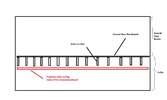- Joined
- 23 Sep 2024
- Messages
- 6
- Reaction score
- 0
- Country

Hi all,
I have a property with a large cellar/basement. Both the electric and gas meters are located in the cellar. Long story short, I need to ensure 30 minutes of fire protection between the cellar and the ground floor, just in case a fire breaks out in the cellar. Building Regs people have suggested installing a ceiling in the cellar comprised of fire-rated plasterboard. Currently there is no ceiling there, only joists on top of which the ground floor floorboards are supported.
My issue with this is that boarding under the joists in the cellar will lead to damp/rot issues in the future, something which they have acknowledged. I suggested an alternative method of painting over the joists with intumescent paint. They won't give me a straight answer as to whether this would be acceptable. It leaves me a little stuck - I don't mind getting the boarding done. However, it doesn't solve the problem of condensation/rot issues. After all, even though there is limited ventilation in the cellar, the temperature changes there will still lead to condensation etc. Trapping this in the space above the fireboards will mess up the joists, I fear.
Just wonder if anyone else has had similar experience, or a better solution?
Many thanks in advance for any suggestions.
I have a property with a large cellar/basement. Both the electric and gas meters are located in the cellar. Long story short, I need to ensure 30 minutes of fire protection between the cellar and the ground floor, just in case a fire breaks out in the cellar. Building Regs people have suggested installing a ceiling in the cellar comprised of fire-rated plasterboard. Currently there is no ceiling there, only joists on top of which the ground floor floorboards are supported.
My issue with this is that boarding under the joists in the cellar will lead to damp/rot issues in the future, something which they have acknowledged. I suggested an alternative method of painting over the joists with intumescent paint. They won't give me a straight answer as to whether this would be acceptable. It leaves me a little stuck - I don't mind getting the boarding done. However, it doesn't solve the problem of condensation/rot issues. After all, even though there is limited ventilation in the cellar, the temperature changes there will still lead to condensation etc. Trapping this in the space above the fireboards will mess up the joists, I fear.
Just wonder if anyone else has had similar experience, or a better solution?
Many thanks in advance for any suggestions.

